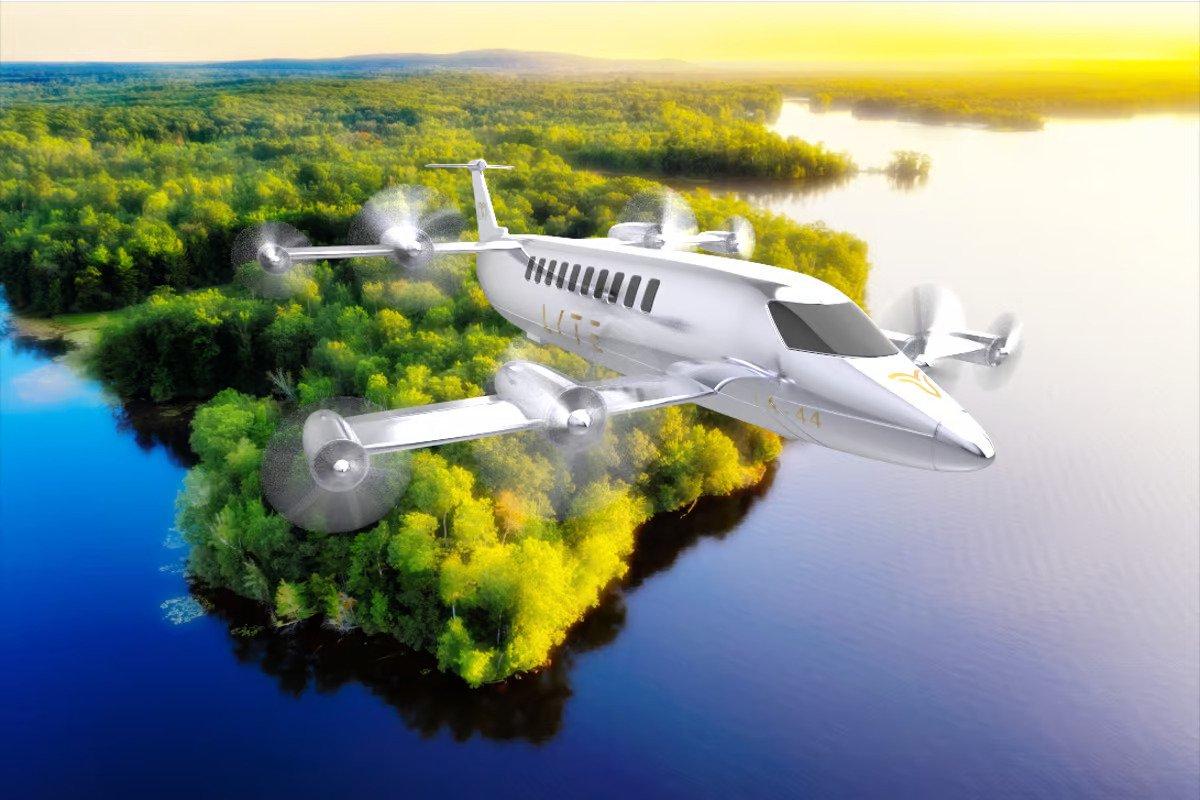Lyte Aviation, a London startup, is aiming for a revolutionary leap in VTOL (Vertical Take-Off and Landing) aircraft. Their ambitious plan involves creating a 44-seat VTOL aircraft capable of remarkable speed (300 km/h or 186 mph) and an impressive range exceeding 1,000 km (620 miles). The design features a unique tandem-wing configuration with multiple propellers enabling vertical takeoff and forward tilting for efficient wing-supported cruising.
The proposed SkyBus stands out not just for its size but for its potential to transform regional flights without the need for runways. The design’s futuristic appearance resembles elongated business jets with tandem wings, each equipped with eight six-bladed props for lifting the colossal aircraft.
In terms of power, Lyte plans to initially use existing turboprop engines running on standard or sustainable jet fuel. However, they aim to integrate hydrogen fuel cell electric motors on the wingtips for instantaneous electric torque, with eventual aspirations to transition entirely to clean hydrogen-electric propulsion when the technology matures.
The company’s timeline involves building a full-scale prototype by 2024, aiming for a test flight in 2025, with a tentative pre-order agreement with Vman Aviation Services for 10 SkyBus aircraft at a significant value of €400 million.
However, entering the VTOL aircraft market, especially with such a large-scale innovation, is immensely challenging. Other companies like GKN Aerospace and Braeden Kelekona have explored similar concepts without notable progress in recent years. The historical challenges in aircraft development, exemplified by the prolonged process of the AW609 by Bell, Boeing, and now Leonardo, underscore the daunting hurdles for such ventures.
Lyte’s CEO, Freshta Farzam, lacks direct aviation experience but hails from a finance background, potentially advantageous for securing the vast investments crucial for certification and production. Nonetheless, the road ahead appears challenging, and the skepticism is high considering the historical difficulty in bringing VTOL aircraft to market.
Despite the bold vision and potential game-changing implications of the SkyBus, its realization faces substantial uncertainties. The complexity of VTOL technology, certification processes, and substantial financial demands make this endeavor an uphill battle, likely categorized as a “long shot” in the aviation industry.

